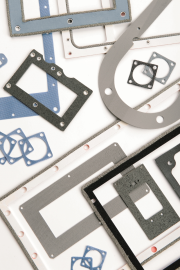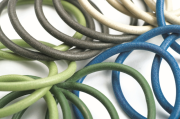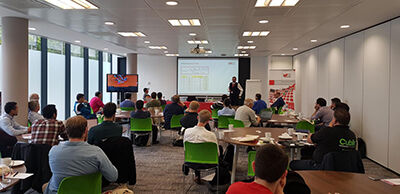 The first level of
The first level of
Large enclosures such as 19” racks and cabinets up to shipping container sized communication cabins tend to need large gaskets to take up the tolerances that occur over long lengths such as doors. If the gasket needs to be 10mm high then the width should be no less than the height therefore the land area for the gasket to sit on is the important factor. Types of gasket suitable for these applications are conductive fabric over foam for commercial application as these are very soft and flexible but only offer electric field shielding and no environmental seal, where magnetic shielding is required knitted wire mesh or combination gaskets are best suited and these can be incorporated with environmental dust and water seals. Beryllium copper fingers are a good option where very high performance is required such as shielded room doors but are high maintenance due to finger breakage.
 Smaller enclosures for instrumentation, communication equipment etc. usually requires much smaller profile gaskets and the most cost effective method of providing and EMC and dust/moisture seal is to use an electrically conductive elastomer O ring in a groove. This method can utilise very small profiles down to 1 mm diameter section or where softer gaskets are required a tubular section can be used. Any O ring diameter or developed length is available. Where there is insufficient land to put a groove the gasket can be directly applied to the surface with conductive elastomers by form in place. This is a conductive elastomer paste that is applied through a syringe by an XYZ robot. Very complex paths can be applied by this method. Conductive elastomers are silicones or fluorosilicone filled with highly conductive particles such as silver plated copper, silver plated aluminium or nickel and coated graphite. Shielding effectiveness is not directly correlated to electrical conductivity and Nickel Coated Graphite offers excellent performance for between ½ and 1/3rd the price of silver based fillers.
Smaller enclosures for instrumentation, communication equipment etc. usually requires much smaller profile gaskets and the most cost effective method of providing and EMC and dust/moisture seal is to use an electrically conductive elastomer O ring in a groove. This method can utilise very small profiles down to 1 mm diameter section or where softer gaskets are required a tubular section can be used. Any O ring diameter or developed length is available. Where there is insufficient land to put a groove the gasket can be directly applied to the surface with conductive elastomers by form in place. This is a conductive elastomer paste that is applied through a syringe by an XYZ robot. Very complex paths can be applied by this method. Conductive elastomers are silicones or fluorosilicone filled with highly conductive particles such as silver plated copper, silver plated aluminium or nickel and coated graphite. Shielding effectiveness is not directly correlated to electrical conductivity and Nickel Coated Graphite offers excellent performance for between ½ and 1/3rd the price of silver based fillers.
 There are many other electrically conductive flat sheet gasket types available such as oriented wires in silicone which is available in solid or sponge silicone with either monel or aluminium wires. This type of gasket is suitable for surface mounting directly to the flange and the wires provide an aggressive contact with the mating surface ensuring very low contact resistance and in turn good EMC shielding.
There are many other electrically conductive flat sheet gasket types available such as oriented wires in silicone which is available in solid or sponge silicone with either monel or aluminium wires. This type of gasket is suitable for surface mounting directly to the flange and the wires provide an aggressive contact with the mating surface ensuring very low contact resistance and in turn good EMC shielding.
Kemtron is an EMC component manufacturer and offer a complete range of EMC gaskets including EMC ventilation panel, shielded windows, cable glands etc.
 www.kemtron.co.uk
www.kemtron.co.uk
